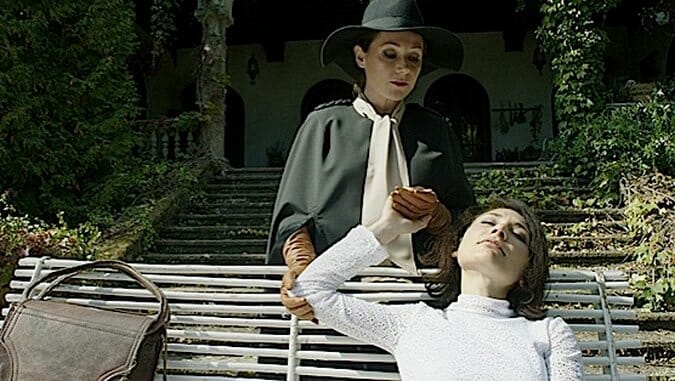The Duke of Burgundy

Even the kinkiest couples have to work to keep the spark alive. That’s the message at the heart of the hypnotic, erotic The Duke of Burgundy, which weaves quite a spell out of repetition and mystery. A midnight movie for the smart set, the latest from up-and-coming filmmaker Peter Strickland (Berberian Sound Studio) is a beautiful puzzle.
The deception begins from the opening frames. Evelyn (Chiara D’Anna) rides her bike to the house of Cynthia (Sidse Babett Knudsen), a slightly older woman who addresses her gruffly, expecting Evelyn, who’s a maid, to clean her home to her exacting standards. (Even worse for poor Evelyn, she’s late on her first day.)
But after criticizing Evelyn, Cynthia ends up in bed with the woman. It turns out this isn’t their first encounter: In fact, it’s part of an elaborate game of role-play for these longtime lovers. And it appears that it’s actually Evelyn who’s calling the shots, writing scripts for them to act out.
From that clever opening, The Duke of Burgundy proceeds to explain (but not explain) the couple’s relationship. Setting most of the action within the walls of the house—except for brief scenes from a conference for butterfly enthusiasts—Strickland has crafted a claustrophobic portrait where we observe the characters’ actions without always understanding them.
Such mysteries are common for Strickland. His debut, Katalin Varga, chronicled the strange odyssey of a woman who travels to the home of the man who raped her and got her pregnant. Berberian Sound Studio concerned a sound mixer slowly losing his mind—or was the studio where he’s working haunted? Utilizing intense, impressionistic sound designs, Strickland makes films as if they were headphone symphonies, enveloping the viewer in his quietly unsettling moodscapes.
-

-

-

-

-

-

-

-

-

-

-

-

-

-

-

-

-

-

-

-

-

-

-

-

-

-

-

-

-

-

-

-

-

-

-

-

-

-

-

-








































